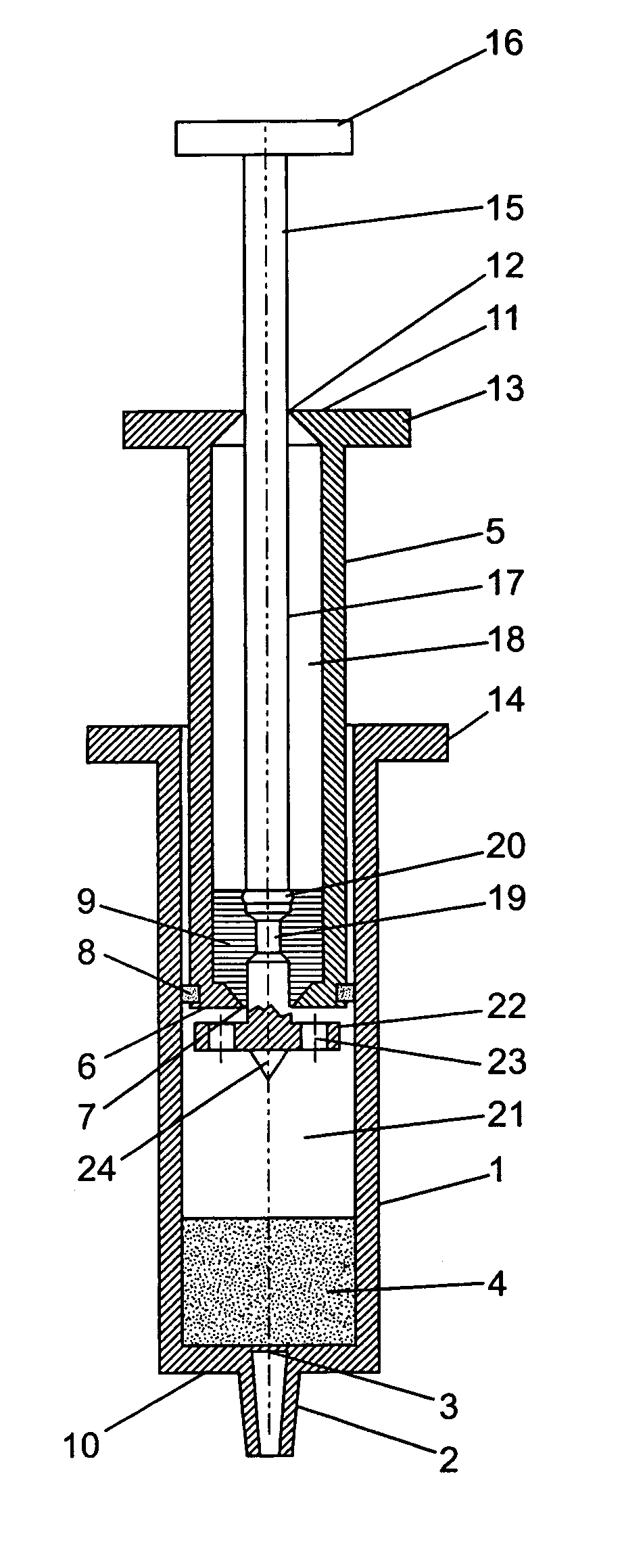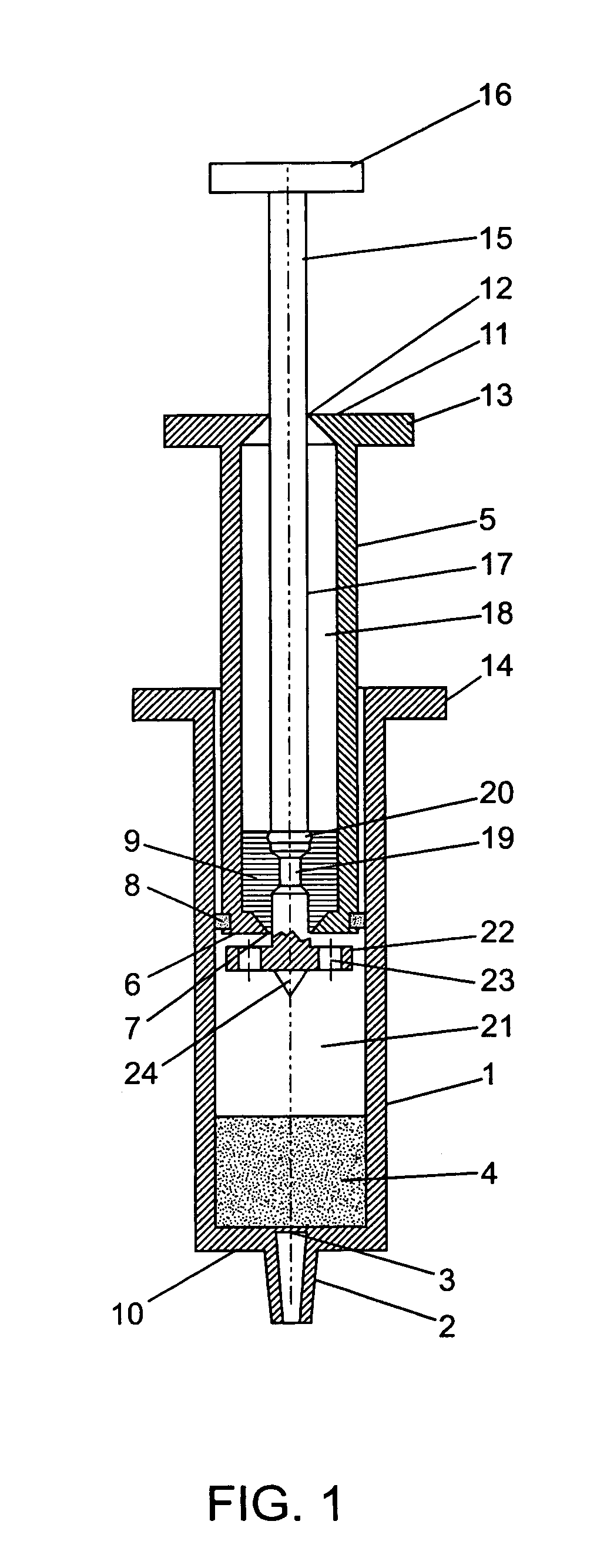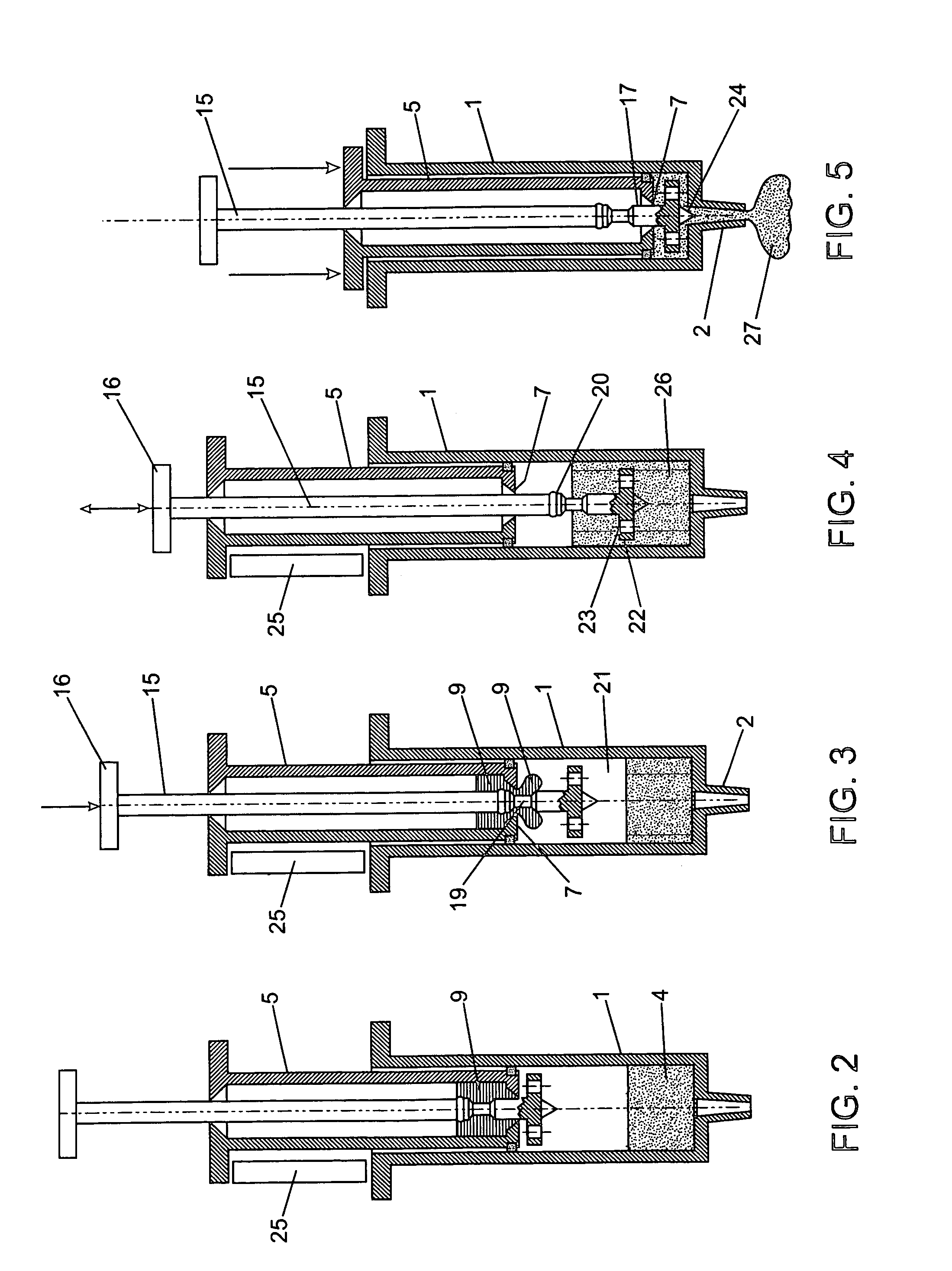Apparatus and methods for mixing two components
a technology of two components and mixing apparatus, applied in the field of medical equipment and methods, can solve the problems of mixing viscous material systems, difficult and costly fabrication, and inability to produce homogeneous mixtures
- Summary
- Abstract
- Description
- Claims
- Application Information
AI Technical Summary
Benefits of technology
Problems solved by technology
Method used
Image
Examples
Embodiment Construction
[0029]The apparatus according to the invention consists of three main components. Additional components that are explained later belong to the embodiment of the invention. An outer hollow cylinder, closed on its lower end includes a bottom provided with a nozzle from which the finished mixture emerges during extrusion. Between an internal space or volume of the nozzle and the hollow cylinder, a closure membrane is found that is perforated right before extrusion. Alternatively, the nozzle may be closed relative to the closure membrane with a stopper.
[0030]The outer hollow cylinder serves as vessel for holding the powdered component of the material system (powder container), which is situated in its lower region or volume. This lower region of the outer hollow cylinder also serves as mixing space. The mixing space may have a volume of approximately 70 ml. Of course, other size mixing spaces could be used depending upon the volume of the materials to be mixed and the size of the mixing...
PUM
 Login to View More
Login to View More Abstract
Description
Claims
Application Information
 Login to View More
Login to View More - R&D
- Intellectual Property
- Life Sciences
- Materials
- Tech Scout
- Unparalleled Data Quality
- Higher Quality Content
- 60% Fewer Hallucinations
Browse by: Latest US Patents, China's latest patents, Technical Efficacy Thesaurus, Application Domain, Technology Topic, Popular Technical Reports.
© 2025 PatSnap. All rights reserved.Legal|Privacy policy|Modern Slavery Act Transparency Statement|Sitemap|About US| Contact US: help@patsnap.com



